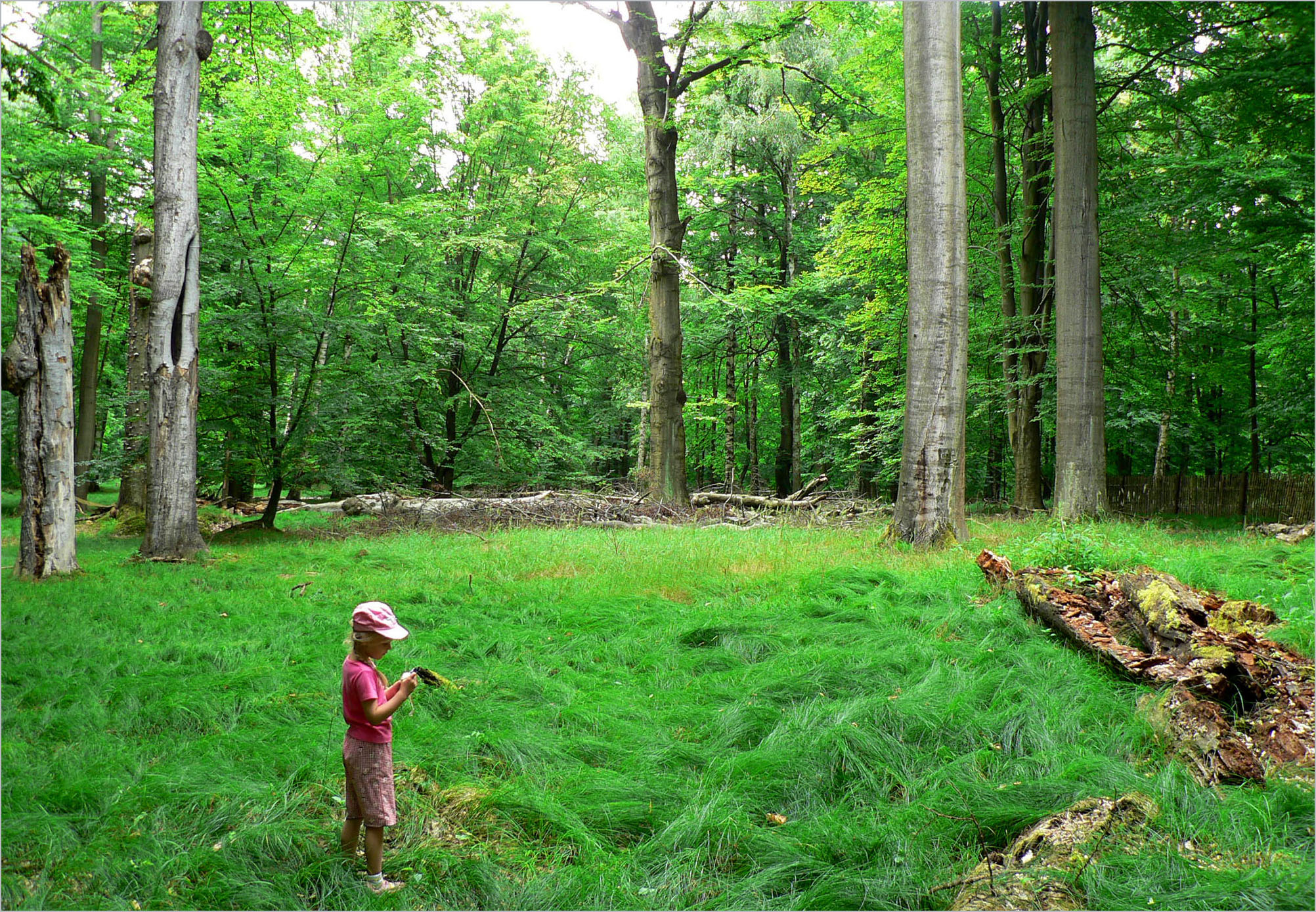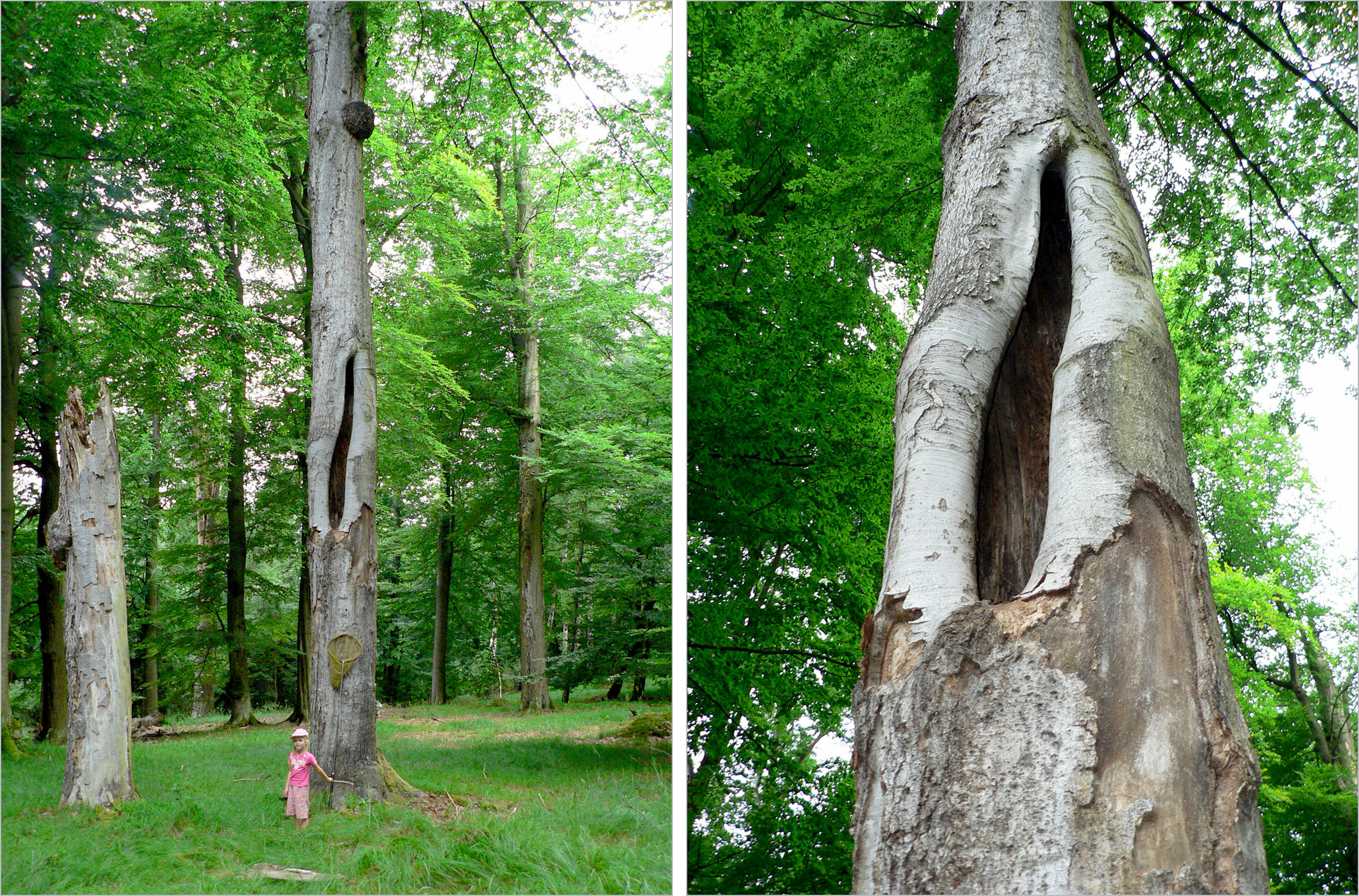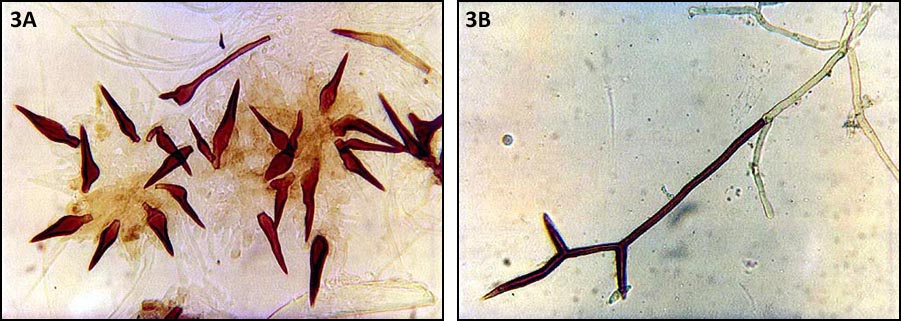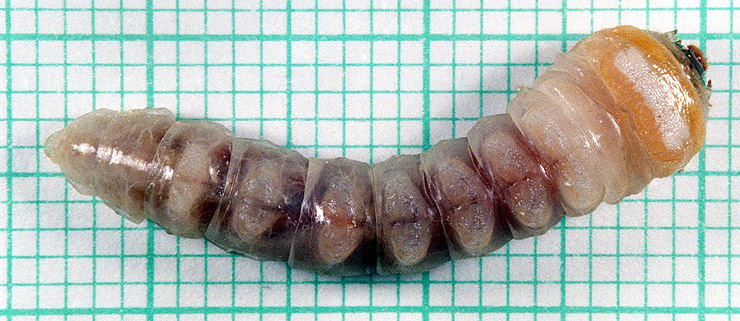biology and habitat

[Photo © David Navrátil]
Figure 1: A typical habitat of Necydalis ulmi Chevrolat, 1838 (Vysoké Chvojno environs, Pardubice region, East Bohemia, Czechia).
Necydalis ulmi requires old well preserved broad-leaved forests growing in altitudes ranging from 0 to 800 metres above sea level (cf. Figure 1). The species develops primarily in Fagus sylvatica, Quercus cerris, and Aesculus hippocastanum. As alternative host plants other Quercus spp., Ulmus, Carpinus, Celtis, Tilia, and also Fraxinus, Populus, Salix, and Juglans should be named.
The larvae of Necydalis ulmi develop in a substrate present in the inside of hollows of living trees (cf. Figures 2A and 2B). These hollows are created by two species of polyphores: Inonotus obliquus (cf. Figure 3A) and Inonotus cuticularis (cf. Figure 3B). This mycelar circle is well recognisable on the substrate background and serves as a clear hallmark of the species presence. The convenient substrate is not only present inside the hollows, but it is also regularly present inside a substantial part of the living trunk, especially in the part above the hollow entrance. The substrate completely surrounded by living tissue is of a different colour to the insides of the hollows. It is usually light yellow and therefore the mycelar circles surrounding the larval galleries are more clearly visible because the circles are of a contrasting red-brown colour. Sometimes, the entrance into the hollow is small and hardly visible, and although the tree seems to be perfectly sound, a substantial part of the heartwood is decayed, infested by fungi, and by larvae (cf. Figure 4) of Necydalis ulmi.

[Photo © David Navrátil]
Figures 2A and 2B: A typical hollow in living common beech (Fagus sylvatica) with larvae of Necydalis ulmi.

[Photo © Josef Vlasák]
Figure 3A: Setae in fruitbody-focuses in the 35 days old mat of Inonotus obliquus isolate.
Figure 3B: Setal hypha in the 22 days old mat of Inonotus cuticularis isolate.
[Amplival microscope; photo taken with Polariod MicroCam, magnification 40x10]

[Photo © František Kovařík]
Figure 4: Larva (4th instar) of Necydalis ulmi.
